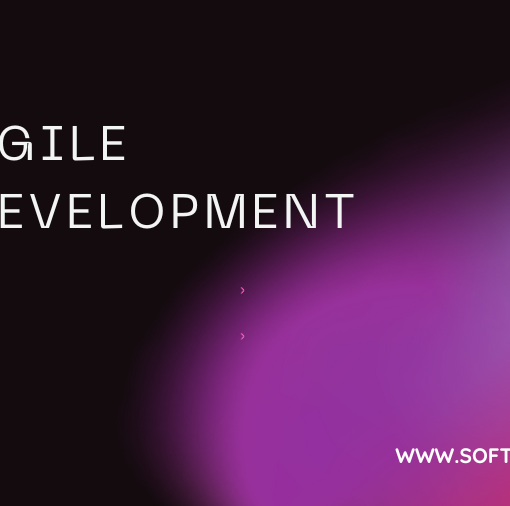Ever watched a user stare blankly at your web app, lost in a sea of static content? Ugh, the frustration! Imagine instead, a dynamic UI5 stage where information pops out like a well-timed spotlight, guiding users towards clarity and action. That’s the magic of UI5 dialog boxes, maestro! Forget clunky pop-ups and frustrating data hunts. UI5 dialog boxes are your secret weapon for elevating user experience and driving conversions. Picture this: a user stumbles on a confusing form field. Bam! A contextual dialog box appears, whispering gentle instructions and boosting confidence. Or, imagine a purchase confirmation dancing onto the screen, celebrating their decision with a celebratory animation. UI5 dialog boxes aren’t just tools; they’re conversation starters, information amplifiers, and user experience champions! So, ditch the static screens and embrace the interactive stage. Dive into this guide and learn how to master UI5 dialog box implementation. We’ll explore different types, unveil best practices, and conquer common challenges, all while keeping your users dancing with delight. Ready to transform your web app from a passive observer to a captivating conductor of user engagement? Let’s orchestrate the perfect UI5 dialog box symphony!
How to conduct the Audit in SAP Software
II. Types of UI5 dialog box implementation
Imagine your UI5 app as a bustling stage, where information dances and user interaction takes center stage. UI5 dialog boxes are the versatile performers in this play, taking on different roles to enhance clarity, gather input, and guide users through their journey. So, let’s meet the stars of this dynamic orchestra!
1. Message Boxes: The Informative Solos
Think of message boxes as the introspective monologues of your app. They appear solo, commanding attention with important messages. They can be:
- Informative: Sharing updates, announcements, or neutral statements.
- Warning: Alerting users about potential issues or incomplete data.
- Error: Signaling something went wrong, prompting corrective action.
- Confirmation: Seeking user validation for crucial decisions.
Each message box delivers its message concisely, with clear icons and actionable buttons. They’re the reliable narrators of your app, keeping users informed and in control.
2. Busy Indicators: The Behind-the-Scenes Jugglers
While the main act is underway, busy indicators are the agile crew working tirelessly behind the scenes. They’re small, animated icons that tell users, “Hey, things are happening!”
- Circular Progress Bars: Spin like mesmerizing wheels, indicating progress in long-running tasks.
- Throbber Animations: Pulsating dots or lines, conveying activity without distracting from the main content.
Busy indicators keep users informed and patient, preventing unnecessary anxiety or confusion. They’re the silent heroes of your app, ensuring a smooth and seamless user experience.
3. Input Dialogs: The Interactive Duets
Imagine a user and your app engaged in a captivating conversation. That’s the magic of input dialogs! They capture user input through various elements like:
- Text Fields: For entering data like names, addresses, or feedback.
- Radio Buttons and Checkboxes: To gather preferences and choices.
- Drop-Down Menus: For selecting options from a pre-defined list.
Input dialogs tailor the user experience, gathering specific data and guiding users through personalized workflows. They’re the interactive partners in your app’s dance, ensuring users feel heard and empowered to contribute.
4. Custom Dialogs: The Multi-Talented Stars
Beyond the pre-defined types, UI5 dialog boxes can be customized to take on unique roles. Imagine them as versatile actors, adapting to any storyline. They can:
- Display complex forms with nested fields and sections.
- Showcase rich media like images, videos, or even interactive charts.
- Integrate with external services for real-time data display or manipulation.
Custom dialogs unleash the full potential of UI5, creating dynamic and engaging experiences that cater to specific needs. They’re the creative geniuses of your app, pushing the boundaries of user interaction and information presentation.
Remember, the stage is yours! Choose the right UI5 dialog box for every scene, and watch your app transform from a static monologue to a captivating, interactive performance. Stay tuned, as we’ll delve deeper into implementing these diverse performers in the next act!
III. UI5 dialog box implementation
Now that you’ve met the diverse performers in your UI5 dialog box orchestra, it’s time to orchestrate their grand entrance! This section will guide you through the steps of implementing these dynamic elements, ensuring they seamlessly enhance your app’s user experience.
1. Defining the Dialog Structure:
Think of this as building the stage for your dialog box. Define its basic properties:
- Type: Choose from the options we explored in the previous act (message box, busy indicator, etc.).
- Title: A clear and concise heading that captures the dialog’s purpose.
- Content: The information or interactive elements displayed within the box.
- Buttons: Define the actions users can take, like “Close,” “Confirm,” or “Submit.”
Remember, clarity and conciseness are key. Avoid overwhelming users with unnecessary information or complex structures.
2. Handling Events: The Prompting Conductor’s Baton
Just like a conductor signals to musicians, events dictate when your dialog box performs its magic. Master these key interactions:
- onOpen: Triggers when the dialog box appears on screen.
- onClose: Called when the dialog box disappears.
- onButtonPress: Activated when a user clicks a button within the dialog.
Utilize these events to control the flow of information, perform actions based on user choices, and ensure smooth transitions between the dialog and the main app screen.
3. Data Binding: The Seamless Information Flow
Imagine data flowing like a graceful river, connecting your dialog box to the rest of your app. Data binding allows you to:
- Display dynamic content: Update the dialog’s content based on data stored in your app’s model.
- Capture user input: Bind input fields and buttons to the model, allowing user actions to update data in real-time.
- Validate input: Ensure data entered in the dialog box adheres to your app’s rules and constraints.
Data binding creates a seamless interaction between the dialog and your app’s core data, fostering a dynamic and responsive user experience.
4. Accessibility: Ensuring Everyone Enjoys the Performance
Just like a well-designed stage caters to all audiences, your UI5 dialog boxes should be accessible to everyone. Here’s how:
- Labeling: Provide clear and concise labels for all components, especially buttons and input fields.
- Keyboard navigation: Ensure users can navigate the dialog using their keyboard, not just their mouse.
- Screen reader compatibility: Make sure screen readers can access and interpret the dialog’s content.
Accessibility isn’t just a good practice; it’s essential for creating inclusive and user-friendly experiences.
Remember, maestro, implementation is an iterative process. Start with the basics, test thoroughly, and refine your dialog box performance as you go. Don’t hesitate to consult the UI5 documentation and explore community resources for additional guidance and inspiration.
In the next act, we’ll unveil the secrets to crafting truly engaging and effective UI5 dialog boxes, boosting your app’s user experience and driving conversions. Stay tuned, the curtain is about to rise on the next act!
SAP UI5 List: Your Guide to Building Efficient and Engaging User
IV. Best Practices for Effective UI5 Dialogs
You’ve mastered the technical maneuvers of implementing UI5 dialog boxes. Now, it’s time to elevate their performance, transforming them from simple information presenters to captivating stars of your user experience. Let’s explore the best practices that will make your dialog boxes shine!
1. Clarity and Conciseness: The Power of a Well-Timed Spotlight
Imagine a stage flooded with unnecessary lights and props. Your dialog box, like a skilled performer, thrives on clarity and focus. Here’s how to achieve it:
- Keep messages concise and actionable: Avoid verbose explanations; get straight to the point.
- Use clear and consistent language: Avoid jargon and technical terms that might confuse users.
- Tailor content to the context: Provide only the information relevant to the user’s current action.
Remember, less is often more. A clear and concise message delivered at the right moment will have a far greater impact than a cluttered information overload.
2. User-Friendly Design: Inviting Gestures and Intuitive Interactions
Think of your dialog box as a friendly conversation partner, not a robotic interrogator. Prioritize user-friendliness with these design principles:
- Logical button placement: Position buttons intuitively, with “Close” or “Cancel” readily accessible.
- Clear visual hierarchy: Use size, color, and spacing to guide users’ attention to key elements.
- Responsive design: Ensure dialogs adapt seamlessly to different screen sizes and devices.
User-friendly design fosters intuitive interactions, reducing friction and frustration for users. Make your dialog box a welcoming and familiar space within your app.
3. Accessibility Compliance: Including Everyone in the Performance
Imagine a stage where some performers are excluded. Accessibility ensures everyone enjoys the show, including users with disabilities. Here’s how to make your dialog boxes inclusive:
- Keyboard navigation: Allow users to navigate the dialog and interact with elements using their keyboard.
- Screen reader compatibility: Ensure screen readers can access and interpret the dialog’s content.
- Color contrast: Use appropriate color combinations for optimal visibility for all users.
Accessibility isn’t just a technical requirement; it’s a moral imperative. By making your dialog boxes accessible, you open the stage to a wider audience and enrich your app’s overall experience.
4. Performance Optimization: Keeping the Rhythm Flowing Smoothly
Think of your dialog box as a dancer, graceful and agile. Optimize its performance for a seamless experience:
- Minimize loading times: Avoid unnecessary animations or heavy content that might delay the dialog’s appearance.
- Pre-load essential data: Ensure crucial information is readily available for immediate display.
- Test responsiveness across devices: Verify smooth performance on different screen sizes and connection speeds.
Performance optimization ensures your dialog boxes appear quickly, respond instantly to user actions, and maintain a smooth flow throughout their performance. Don’t let lag or delays disrupt the rhythm of your user’s experience.
Remember, maestro, best practices are a continuous journey. Experiment, refine, and adapt your dialog boxes based on user feedback and data analysis. Embrace the evolution of technology and explore new UI5 features to keep your dialogs fresh and engaging.
In the next act, we’ll tackle the common challenges that might hinder your dialog box performance, equipping you with the tools to overcome them. Stay tuned, the show must go on!
V. Common Challenges and Solutions
Even the most seasoned performers face hiccups. So, don’t be surprised if your UI5 dialog boxes encounter some challenges. But fear not, maestro! This section equips you with solutions to overcome these common obstacles and keep your show running smoothly.
1. Positioning and Stacking: Avoiding the Overshadowed Act
Imagine two dialog boxes competing for attention on the same stage. Positioning and stacking can be tricky. Here’s how to avoid confusion:
- Prioritize context: Determine which dialog is most relevant to the user’s current action and display it prominently.
- Modal vs. Non-Modal: Use modal dialogs sparingly for critical actions, allowing non-modal options for less disruptive interactions.
- Consider stacking order: If multiple dialogs are necessary, prioritize the most urgent and present them in a logical sequence.
Remember, clear visual hierarchy and context awareness are key to preventing user confusion and ensuring each dialog gets its moment in the spotlight.
2. Error Handling: Graceful Exits for Unexpected Twists
Even the most polished script can encounter errors. How your dialog box handles unexpected situations can make or break the user experience:
- Informative error messages: Avoid technical jargon; explain errors clearly and suggest solutions.
- Provide recovery options: Allow users to correct mistakes or cancel actions without losing progress.
- Log errors and track user behavior: Identify recurring issues and continuously improve your dialog box’s error handling.
By turning errors into opportunities for learning and improvement, you can transform them from disruptive moments into valuable feedback mechanisms.
3. Testing and Debugging: Ensuring a Flawless Performance
No stage production is complete without rigorous testing. Thoroughly test your UI5 dialog boxes for:
- Functionality: Verify all components work as intended, across different devices and browsers.
- Accessibility: Ensure screen readers and keyboard navigation function flawlessly.
- User experience: Conduct user testing to identify any usability issues or confusing interactions.
Testing and debugging are your backstage heroes, identifying and resolving potential glitches before they reach the audience. Don’t let bugs dim the light of your dialog box performance!
Remember, maestro, challenges are opportunities for growth. Don’t let them discourage you; embrace them as stepping stones to a more polished and engaging user experience. Leverage the solutions provided, seek community support when needed, and continuously refine your dialog boxes for optimal performance.
In the next act, we’ll explore the exciting future of UI5 dialog boxes, showcasing innovative features and trends that will keep your app’s performance fresh and captivating. Stay tuned, the curtain is about to rise on a world of possibilities!
The Curtain Falls, but the Symphony Continues: Mastering UI5 Dialog Boxes
From the captivating dance of informative messages to the interactive duets of input dialogs, you’ve journeyed through the diverse orchestra of UI5 dialog boxes. You’ve learned to craft their structure, orchestrate their interactions, and optimize their performance for a seamless user experience. Now, it’s your turn to take the conductor’s baton and bring your app to life!
Remember, UI5 dialog boxes aren’t just technical tools; they’re conversation starters, information amplifiers, and user experience champions. Embrace their power to:
- Spark user engagement: Break the monotony with dynamic interactions, adding vibrancy and focus to your app.
- Guide users towards clarity: Deliver important messages and confirmations, ensuring users are informed and empowered.
- Gather valuable data: Design intuitive input forms and workflows within dialogs to capture user insights efficiently.
- Boost conversions: Leverage timely prompts and relevant options to encourage desired user actions and drive success.
As you embark on implementing UI5 dialog boxes, remember:
- Start small and iterate: Begin with simple dialogs and gradually add complexity as you gain confidence.
- Test and refine: Rigorous testing and user feedback are your backstage heroes, ensuring smooth performance and optimal user experience.
- Embrace the community: Leverage the wealth of resources and support available from the UI5 community to overcome challenges and continuously evolve.
The stage is yours, maestro! So, raise your baton, unleash the power of UI5 dialog boxes, and watch your app transform from a static monologue into a captivating user symphony. Remember, the greatest performances are those that resonate with users, and with the knowledge you’ve gained, you’re well on your way to crafting a masterpiece.
And as one final note, remember: the world of UI5 is ever-evolving, with new features and best practices emerging constantly. Stay curious, explore the latest advancements, and keep your dialog box orchestra playing in perfect harmony with the ever-changing digital landscape.
Now, take your bow, maestro! The audience awaits your next act of UI5 brilliance.





